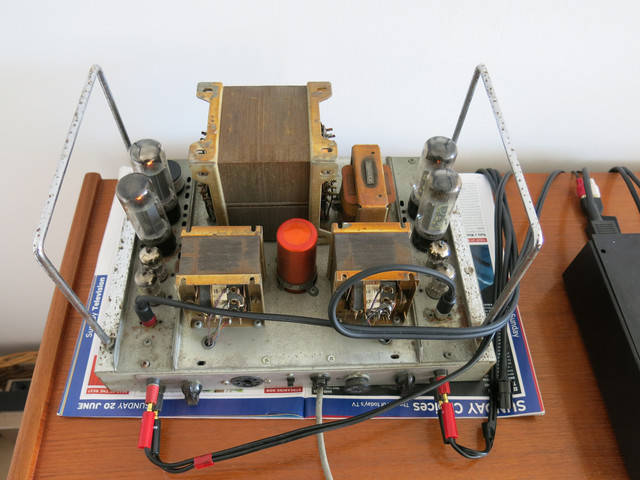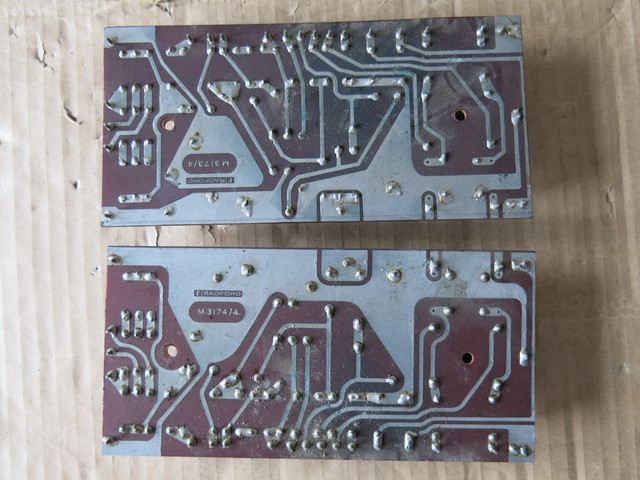snowman_al
pfm Member
I collected a new toy yesterday.
A really cosmetically challenged Radford STA15 III. Been in a damp shed for a while apparently.
But all original and never repaired as far as I can see. The caps are dated December 64 and January 65.
The valves are all yellow label Mullard except for the Mazda GZ34 (which was a Mullard f32 from '64).
Unfortunately it and one of the ECF82s were dead, still could be worse.
I could not resist a quick vacuum out of the dust and spiders. Checked the transformers were okay and ran it up slowly to 240 volts and nothing went pop even with the 'Silicon GZ34' in.
So I popped the valves back in (and a new ECF82) and was greeted with one channel working and a lot of crackling from the other.
A quick fiddle with the valves and the culprit for the crackle is a very poorly phase splitter valve socket, but with the valve at an angle (!) it comes to life in Stereo. That was an hour or more ago and so far it is a happy amp .
Yes there is a little fizz and ticking in the very background with no input, and the transformer has the typical Radford STA15 hum, but not nearly as loud as some I've heard.
Not bad for a valve amplifier that's likely 56 years old and still original apart from 2 valves.






Okay some of the voltages are awry, but that is leaky electrolytic caps, especially C2 on one side with only 30 volts on the screen...
So strip her down next and see what she needs.
Looks like I will be talking to Will at Radford Revival soon.
Alan
A really cosmetically challenged Radford STA15 III. Been in a damp shed for a while apparently.
But all original and never repaired as far as I can see. The caps are dated December 64 and January 65.
The valves are all yellow label Mullard except for the Mazda GZ34 (which was a Mullard f32 from '64).
Unfortunately it and one of the ECF82s were dead, still could be worse.
I could not resist a quick vacuum out of the dust and spiders. Checked the transformers were okay and ran it up slowly to 240 volts and nothing went pop even with the 'Silicon GZ34' in.
So I popped the valves back in (and a new ECF82) and was greeted with one channel working and a lot of crackling from the other.
A quick fiddle with the valves and the culprit for the crackle is a very poorly phase splitter valve socket, but with the valve at an angle (!) it comes to life in Stereo. That was an hour or more ago and so far it is a happy amp .
Yes there is a little fizz and ticking in the very background with no input, and the transformer has the typical Radford STA15 hum, but not nearly as loud as some I've heard.
Not bad for a valve amplifier that's likely 56 years old and still original apart from 2 valves.






Okay some of the voltages are awry, but that is leaky electrolytic caps, especially C2 on one side with only 30 volts on the screen...
So strip her down next and see what she needs.
Looks like I will be talking to Will at Radford Revival soon.
Alan







